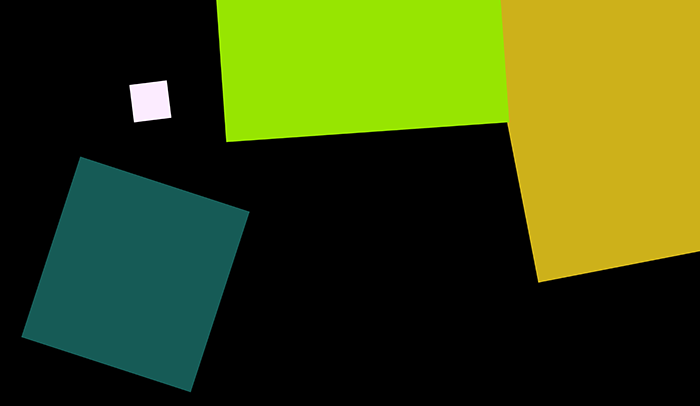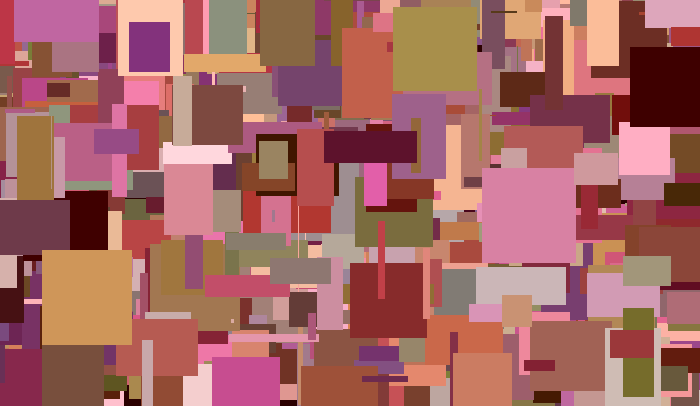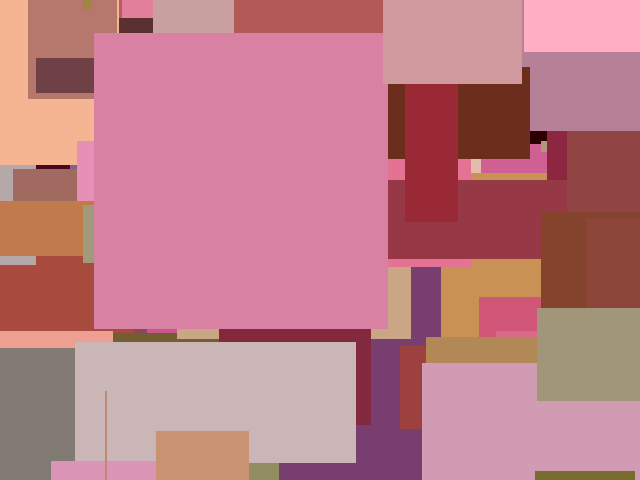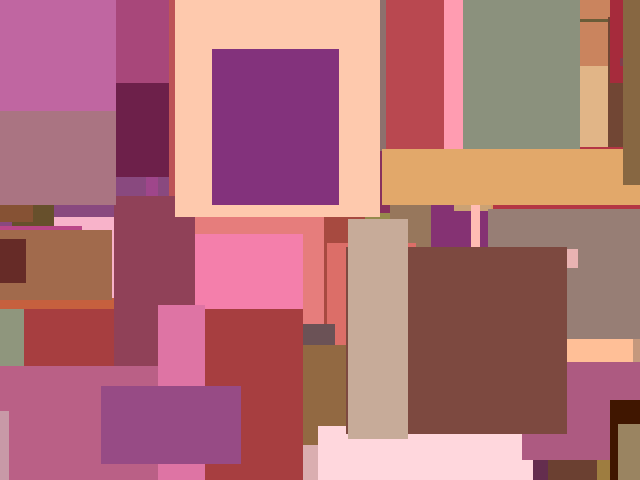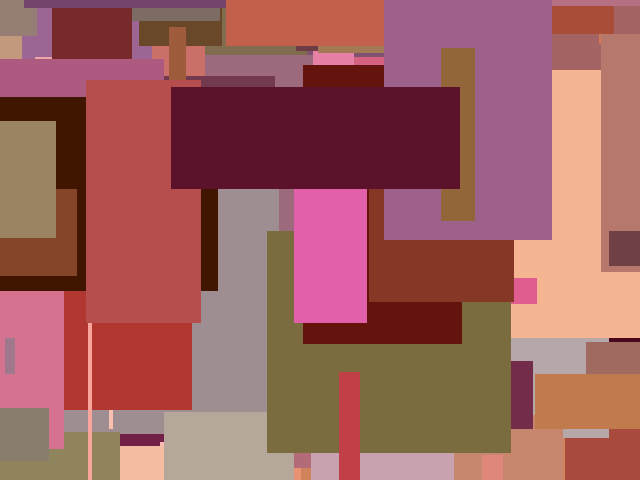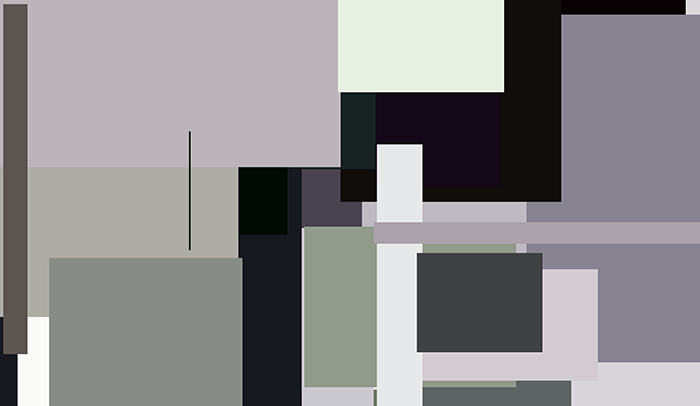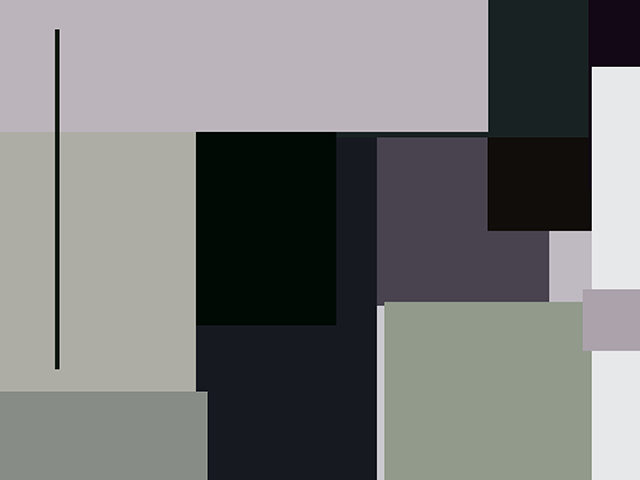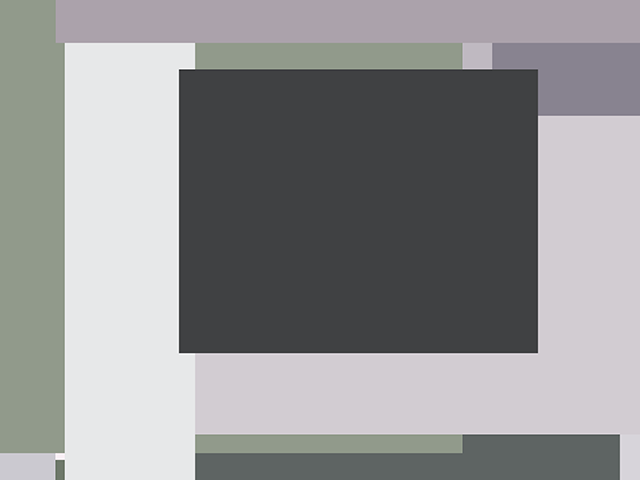6200 pixels (w) x 3600 pixels (h), computer ‘painting’ using my own ‘kinetic’ abstract computer program.
Date produced: 30th September 2015
This abstract image is made up of just 4 randomly coloured filled rectangles on a flat black background. There is a nice ‘simplicity’ about this abstract image.
This is the first abstract image in this display that is much larger than the screen size I was using. With my abstract program development, I wanted to work on larger images than those that could just be projected onto my computer screen. Eventually, I worked out a way of setting up a large 24-bit buffer to hold and work on a very large abstract image, projecting a reduced size image of that large image to the screen. I came up with the size of 6200 pixels wide by 3600 pixels high, because that shape approximately fitted the shape of many of the new monitors coming out at the time, and it allowed enough memory for an extra work buffer, an undo buffer and an image loading buffer within my computer’s available RAM.
One of the big problems I had to overcome was programming the drawing of a number of graphic objects (such as filled rectangles that were to be drawn at any angle) to this large buffer, because the compiled BASIC that I was using had no commands for drawing such graphic objects to an isolated buffer. It had commands for plotting pixels, reading pixel colour values, clearing the buffer, copying the contents of one buffer to another, etc., but not much else. I came up with routines to draw filled rectangles and filled circles by drawing them pixel by pixel. Luckily, I found that the routines I developed, could be applied very quickly to the large buffer. I found that hundreds of filled rectangles or filled circles could be drawn to my large buffer in a fraction of a second.
You can see from the images here, that the routines work accurately, and allow the rectangles to overlap with the edges of the buffer without causing problems. |
